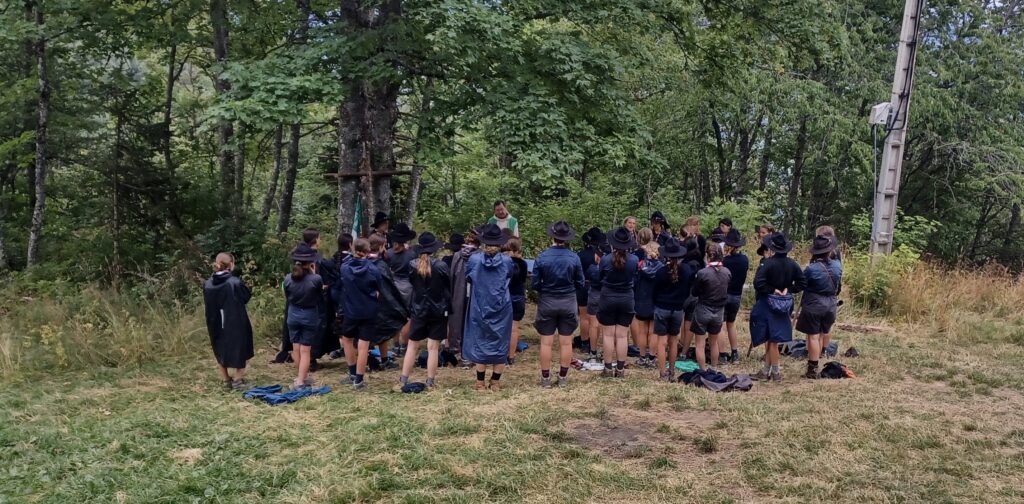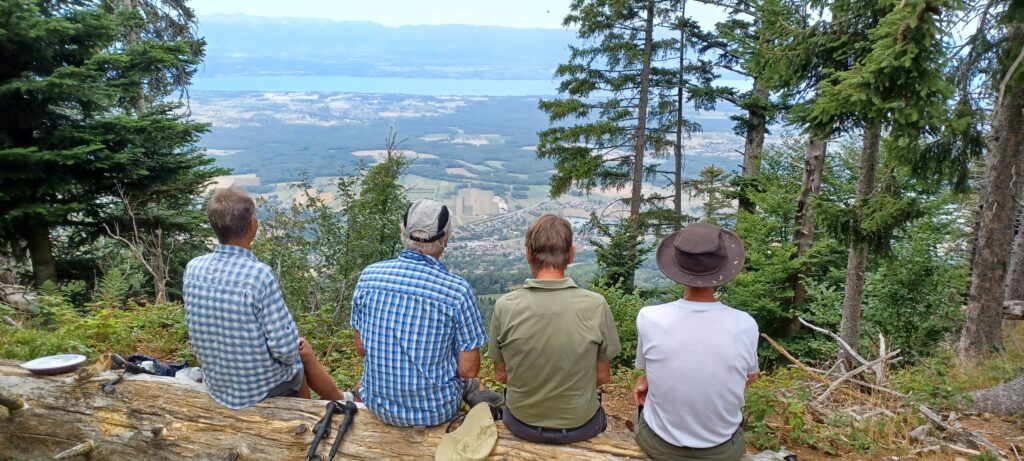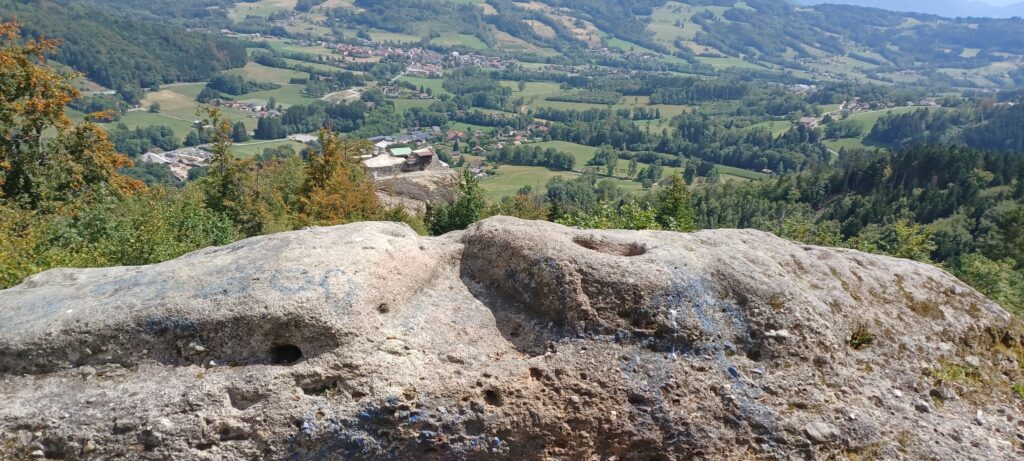Due to the current heatwave, it was with some reservations that I suggested a hike on the Voirons, that dark-looking ridge across the lake from Vaud. However, having followed the same hike some five years ago, I was reminded that much of the trail is in woodland so there would be a fair amount of shade. Five of us in two cars rolled up at the designated time at the tiny hamlet of Le Penaz near the pleasant town of Boëge. In the event, the skies were heavy with cloud and there was even some rain in the air.
We set off at a good pace climbing up steeply through the forest, even grateful for the light rain that fell occasionally. After an hour or so, we heard some gentle singing and came across a group of about thirty Girl Scouts who were camping in the woods. It was a good opportunity to stop and drink some water and listen to this delightful choir.

Further on, we skirted the grounds of the Monastery of the Sisters of Bethlehem which was built in the 1980s and housed around 100 nuns. It had been my intention to take an extended walk along a ridge towards the Pointe de Brantaz, but the guidebook was quoting non-existent signposts so we proceeded to the Signal des Voirons, which at 1,480 meters is the highest point on the mountain.
Apart from the Guides, we hadn’t met anyone else on the trail, but at the Signal there were many people and among them was a family from Versailles that we had seen at the monastery. The father told us that he was visiting his sister who had been a nun for 20 years and this was the only time that she could have contact with the outside world. She was obviously relishing being with her nieces picking bowls of wild fruit.

We had a little snifter of Armenian Brandy to fortify us and continued on our steep downward route until we reached the Notre Dame de Voirons, a five-hundred year-old chapel. There was an invitation to ring the bell, but try as I might, I couldn’t raise a clang. However, Mark must have been a campanologist in a previous life as his gentle touch produced a wonderful sound! Nathan had visited the area last year and remembered a good viewpoint further on that we could use for lunch. This proved to be ideal and we were able to perch on a large fallen log overlooking the whole Geneva basin and Jura beyond. Mervyn produced a very acceptable Argentinian Cabernet Sauvignon and Nathan passed around his home-grown tomatoes. Dessert was available on the low-growing blackberry bushes all around us.

Suitably bolstered, we descended down through the forest on a very steep path that looked suspiciously like a dried up riverbed until we came to open country with great views of the Vallée Verte and the Alps. At the top of a steep bank was a Copacou, a cupule or cup stone. Apparently, this had been used for human sacrifices where the victim’s throat was cut and the blood flowed down the steep side of the rock. This naturally provoked a realistic enactment, but happily Mark was granted a stay of execution at the last moment.


We passed the 12th Century castle of Rocafort (not the cheese!) on our final stretch down to the cars.

The whole area is a nature reserve, but the promised roe deer, red deer, wild boar and lynxes were obviously on their summer break as there was little wildlife to be seen. The high temperatures had finally caught up with us and there was a general consensus that beers were warranted, so we repaired to Boëge for some welcome refreshment before heading home. Many thanks for the drinks, Peter!
Present: Mark 2rrs, Mervyn, Nathan, Peter Strebel and Richard S.
Distance: 11 kms
Denivellation: 664 meters
